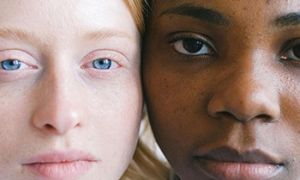

The following are 8 Principles that reflect contemporary theories and research evidence concerning children and young people’s play, leisure and learning and place-based and relational pedagogies.
The MTOP Posters With Images can be used to display within the service. Each individual outcome includes an image and the sub-outcomes. The Learning Outcomes are to be used to reflect on children’s learning and focus on what a child can achieve. These include Version 2.0 outcomes which were recently updated (2023).
MTOP Learning Outcomes Posters Version 2.0 displays the main MTOP Learning Outcomes and the sub-outcomes. They can be used to display within the service or used as a reference for documentation and planning. The Learning Outcomes are to be used to reflect on children’s learning and focus on what a child can achieve.
The following lists the sub-outcomes, examples of evidence of when children can achieve each sub-outcome and how educators can promote and help children to MTOP Outcome 2: Children And Young People Are Connected With And Contribute To Their World V2.0.
The MTOP Main Outcome Posters includes each of the main outcomes of the My Time Our Place framework for oosh services. These can be used as a display around the room to show how children achieve each outcome.
The following Child Observation Posters provides a range of different observation methods that can be used when observing children. Each poster provides a brief description of the observation method and a sample. These posters can be displayed within the room to assist parents in understanding the purpose of observations and it can also be displayed in the staff room as a reminder for Educators. Using a variety of different observation methods provides a foundation for a child's individual assessment and planning and a well rounded and holistic picture of the child.
 As an Educator in Australia, your pay rate falls under the Children’s Services Award 2010. This award states the minimum amount that an employer can… Read More
As an Educator in Australia, your pay rate falls under the Children’s Services Award 2010. This award states the minimum amount that an employer can… Read More
 When working as a qualified Early Childhood Teacher (with a university degree) within a service, your rate of pay will come from the Educational Services… Read More
When working as a qualified Early Childhood Teacher (with a university degree) within a service, your rate of pay will come from the Educational Services… Read More
 When working as a Diploma Qualified Educator your pay rate is from the Children's Services Award 2010. This Award states your minimum rate of pay… Read More
When working as a Diploma Qualified Educator your pay rate is from the Children's Services Award 2010. This Award states your minimum rate of pay… Read More
 When working as a Cert 3 Qualified Educator, your pay rate is from the Children's Services Award 2010. This Award states your minimum rate of… Read More
When working as a Cert 3 Qualified Educator, your pay rate is from the Children's Services Award 2010. This Award states your minimum rate of… Read More
 Educational Leaders play a crucial role in their early childhood service by ensuring that the educational program aligns with best practices and supports the holistic… Read More
Educational Leaders play a crucial role in their early childhood service by ensuring that the educational program aligns with best practices and supports the holistic… Read More
 In early childhood education and care, ratios are more than a technicality—they are a frontline safeguard. Every child deserves responsive supervision, emotional connection, and developmental… Read More
In early childhood education and care, ratios are more than a technicality—they are a frontline safeguard. Every child deserves responsive supervision, emotional connection, and developmental… Read More
 With the new national child safety reforms kicking in on 1 September 2025, early childhood services like yours have a real opportunity to lead the… Read More
With the new national child safety reforms kicking in on 1 September 2025, early childhood services like yours have a real opportunity to lead the… Read More
 Here’s a comprehensive Mobile Phone and Smart Watch Policy tailored for early childhood education and care (ECEC) services in Australia, aligned with the latest 2025… Read More
Here’s a comprehensive Mobile Phone and Smart Watch Policy tailored for early childhood education and care (ECEC) services in Australia, aligned with the latest 2025… Read More
 The Sea of Fish Challenge is a national initiative that invites children, educators, families, and communities to create and display fish artworks as a symbol… Read More
The Sea of Fish Challenge is a national initiative that invites children, educators, families, and communities to create and display fish artworks as a symbol… Read More
 Across the early childhood education and care sector, educators are sounding the alarm: current staffing ratios are insufficient to deliver safe, meaningful, and developmentally appropriate… Read More
Across the early childhood education and care sector, educators are sounding the alarm: current staffing ratios are insufficient to deliver safe, meaningful, and developmentally appropriate… Read More

Linking educational theories to the EYLF enriches educational practices and helps create a more holistic...
See more...
The Four Eyes Policy—also known as the Four Eyes Principle or Two-Person Rule—is a safeguarding...
See more...
You’ve seen a job position that you’re interested in, you have a resume but it...
See more...© 2009-2025 Aussie Childcare Network Pty Ltd. All Rights Reserved.

